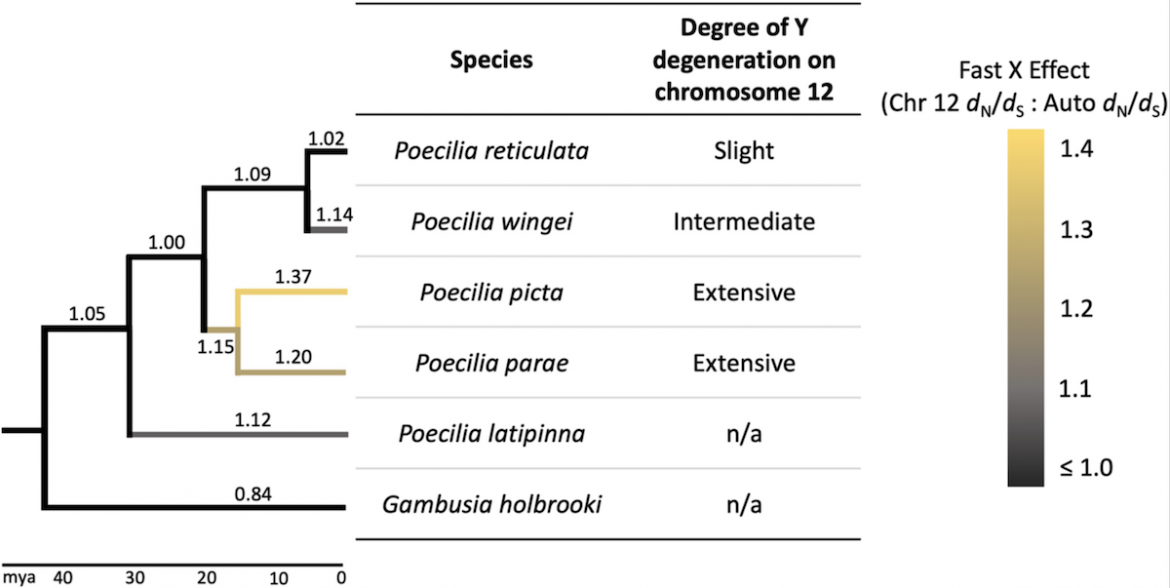
FIGURE 2 - Fast-X effect, calculated as the ratio of dN/dS for the X chromosome (excluding the PAR) to that of the autosomes, across the poeciliids. In Poecilia latipinna and Gambusia holbrooki, chromosome 12 has not been implicated as the sex chromosome. Numbers on each branch represent the estimated Fast-X effect. Phylogeny based on Meredith et al. (2010) and Rabosky et al. (2018).
Originally posted on September 7, 2021
Iulia Darolti, Lydia J. M. Fong, Benjamin A. Sandkam, David C. H. Metzger, Judith E. Mank. 2023. Sex chromosome heteromorphism and the Fast-X effect in poeciliids. Molecular Ecology
Abstract
Fast-X evolution has been observed in a range of heteromorphic sex chromosomes. However, it remains unclear how early in the process of sex chromosome differentiation the Fast-X effect becomes detectible. Recently, we uncovered an extreme variation in sex chromosome heteromorphism across poeciliid fish species. The common guppy, Poecilia reticulata, Endler's guppy, P. wingei, swamp guppy, P. picta and para guppy, P. parae, appear to share the same XY system and exhibit a remarkable range of heteromorphism. Species outside this group lack this sex chromosome system. We combined analyses of sequence divergence and polymorphism data across poeciliids to investigate X chromosome evolution as a function of hemizygosity and reveal the causes for Fast-X effects. Consistent with the extent of Y degeneration in each species, we detect higher rates of divergence on the X relative to autosomes, a signal of Fast-X evolution, in P. picta and P. parae, species with high levels of X hemizygosity in males. In P. reticulata, which exhibits largely homomorphic sex chromosomes and little evidence of hemizygosity, we observe no change in the rate of evolution of X-linked relative to autosomal genes. In P. wingei, the species with intermediate sex chromosome differentiation, we see an increase in the rate of nonsynonymous substitutions on the older stratum of divergence only. We also use our comparative approach to test for the time of origin of the sex chromosomes in this clade. Taken together, our study reveals an important role of hemizygosity in Fast-X evolution.